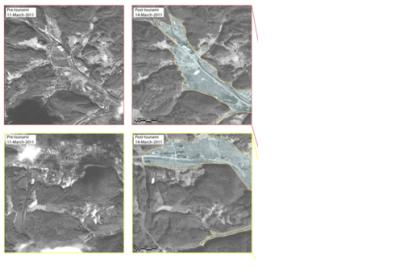Several academic institutions are teaming up in an effort organized by the U.S. Geological Survey to help turn satellite imagery into actionable data in Japan. Satellite photos tell a powerful story, of course. But they also can be used as leverage in relief efforts. A team at Rochester Institute of Technology, together with several other institutions (Harvard, George Mason, and Penn State, among them), are turning satellite photos into actionable data that the Japanese can use in relief efforts.
On the simplest leve a satellite photo can tell you which road to take, and which to avoid. But the RIT team goes much deeper than that, mining imagery for data used in logistics. For example, a Japanese relief team might know that certain segment of a town lies in rubble. But they might not know the volume of the rubble--just how large a fleet of trucks they'll need to clear away the debris. Using something called Geographic Information Systems software (GIS), researchers can trace lines around a pile of rubble, and the software will instantly tell you the size of the pile.
Pre- and post-quake imagery makes automation possible. A program could compare and contrast the two images much as in the NYT slider feature and could automatically calculate the devastation that way. Other research might enable the automatic detection of rubble, since debris has a random structure, as opposed to the regular orderly grid of the road and buildings in most towns and cities.

